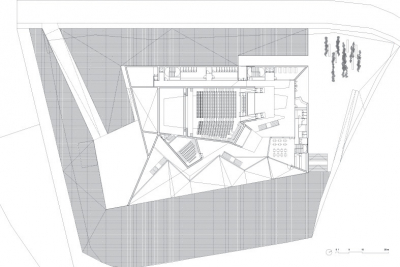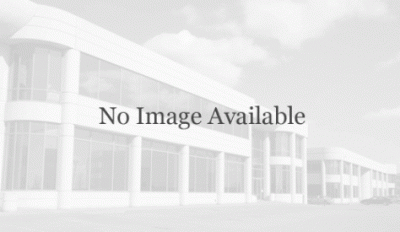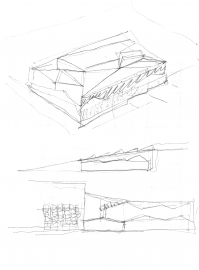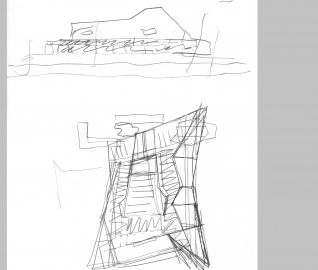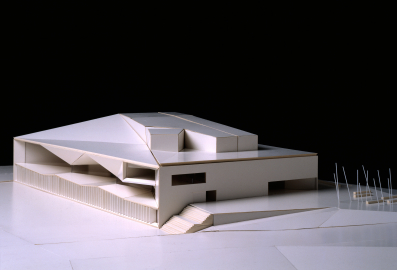Municipal Auditorium of Teulada
The auditorium of Teulada, from its point on the mountain and surrounded by the intense light and the beauty of the bay of Alicante, asserts its presence as a large space in itself. A single continuous space, configured by muscular concrete walls, which extends in the large southeast facade overlooking the Mediterranean sea.
The auditorium had to be visible from both Teulada and Moraira, two cores of one same town, and join them urbanistically. It has a main hall for 700 that can be divided into two, and rooms for auditions, rehearsals, and exhibitions. Seaward the building takes on a geometric and spatial complexity, creating a surface-space. This three-dimensional facade presents indentations and projections, clad with sandblasted marine aluminum sheets. The jagged geometry is determined by studies made of the suns behavior. Sunlight never enters directly, thanks, too, to a concrete grille. The blue tiles coating the building recall Mediterranean domes.
Teulada-Moraira is divided into two units that form a single administrative entity. Located in Alicante, in a valley that descends from the mountains to the sea, the city takes advantage of the two realities, earth and sea.
As part of a new urban development, the Municipal Auditorium rises in Teulada, the higher part of the city. From here, and over the valley sprinkled with small white buildings, one sees the town of Moraira by the sea. The building thus works as a link between two physically separated urban centers. Such a location and presence in the city and landscape underlies all decisions made with regard to the buildings spatial configuration and formal definition. The topographical features and the slopes of the plot have provided the remaining references.
The design adapts to the natural topography of the plot, making the auditoriums descend towards the southwest and putting the main access areas on the northeast and southeast edges. These accesses are organized and oriented to afford the best views of Moraira and the sea, in the process emphasizing the buildings connective role. The halls flanking the main auditorium are particularly important, constituting privileged vantage points over the sea. In configuration and construction they form a large space-facade, deep, geometric, and carefully sculpted like a diamond, always taking into account the position of the Mediterranean sun, which in this orientation would otherwise glare down relentlessly. This side facade formally combines all the project guidelines. In carefully carved pieces it contains the cafeteria and restaurant and an exhibition area at a lower level, always with views onto the Mediterranean. Like the ceiling, the floor of this huge opening folds here and there to evoke the seashore rocks. At night this facade is a backdrop, a lighthouse shining over the paths joining Teulada and Moraira.
Significant are the side foyers that become large lookouts through a huge facade-spacedeep, geometric, glazed, and carefully sculpted in accordance with the different inclinations, so as to regulate the direct inflow of solar rays at peak times of summer. The façade -an architectural diaphragm- regulates sunlight by varying the height of its glazed surfaces, filtering solar intensity by creating a thickness of shades. The project also worked on compactness in the programmatic and functional layout, concentrating the networks of the infrastructural installations.

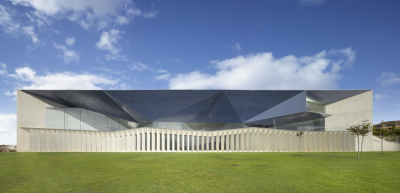
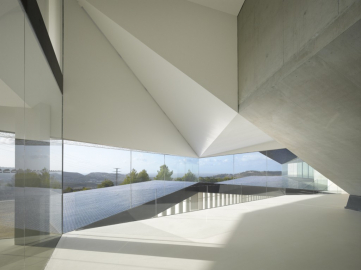
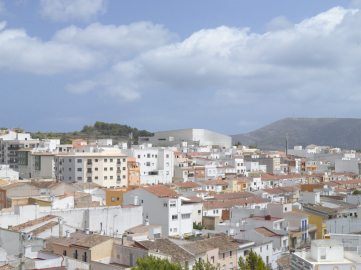
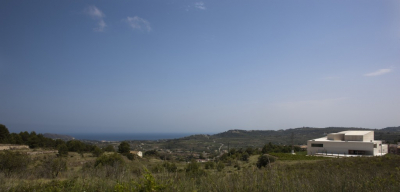
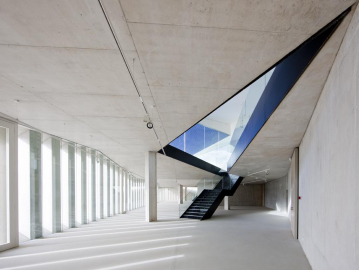
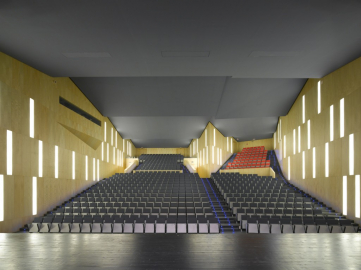
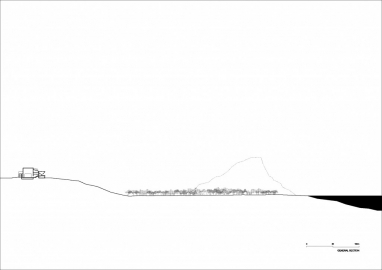
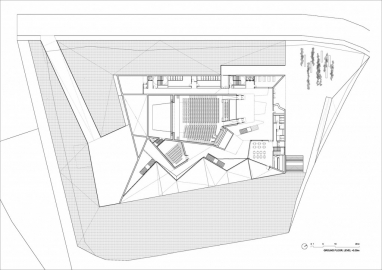
 copy.jpg)
 copy.jpg)
